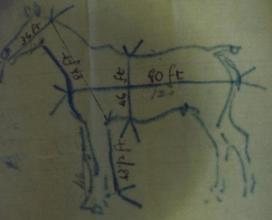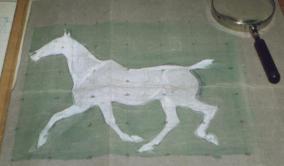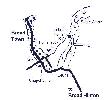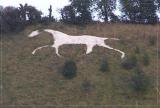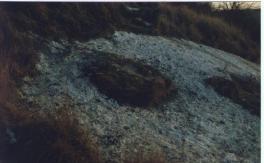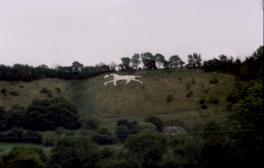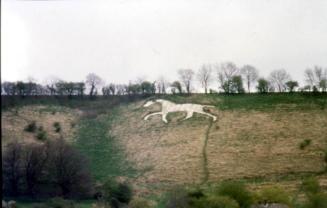Broad Town White Horse
In Conjunction with the Broad Town White Horse Restoration Society.
General Information
National Grid Ref SU 0986 7827
The horse faces west on a long grassed covered steep slope (450’ above sea level ) above Littletown farmhouse just outside Broad Town. The horse is 80’ by 60’ feet in size composed of fine compacted chalk, with well defined edges although in good condition the chalk is rather greyish. The horse can be seen well from the B4041 and from the centre of Broad Town itself. The best view is from the farm track which leads from Chapel Lane to Littletown farmhouse. The footpath leading from this track allows the horse to be approached, the steps up to the horse are very dangerous and it is advised that they are not used. The Restoration Society asks "Would visitors not climb the steps below the Horse as they are dangerous and are only to be used when the Horse is being maintained. The land is private and no responsibility for any accident can be accepted." Parking places are not designated so parking on the road in Broad Town is necessary. The horse can also be reached from footpaths from the top of the hill although parking here is a problem.
History.
There are three accounts of the origin of this horse although Plenderleaths account is the more plausible. He states that it was cut in 1864 by William Simmonds of Littleton Farm. William Simmonds admitted to this later and indicated his plan was to enlarge the horse gradually, the way he was sure all white horse were made. He had to give the farm up (no reason was given) and was unable to pursue his experiment, which is a real shame. The next story contradicts this but lacks the detail to be correct. A letter appeared in the morning post in September 1919 from the curator of the folklore section of the Imperial War Museum, who stated that in his childhood in Wotton Bassett in 1863, he visited with another fellow across a great valley to the cliff on which the horse is cut. When we got there, we set to work with a number of tools which we had brought to ‘scour the white horse.’ He also states that the horse was about fifty years old. There are two possibilities, that the curator was mistaken with dates or even got the horse mixed up with the Hackpen hill horse a few miles along the same road. The second explanation is that William Simmonds only scoured the horse in 1864. The third story was that it was cut in 1896 by Mr Horsey, Horsley or Hussey (the name uncertain), but this is more likely a scouring of the horse. The horse was covered during the war.
The Broad Town White Horse Restoration Society
The society was formed early in 1991 following a village appraisal, with the intention of restoring the Horse which had become overgrown and barely visible. Money from Community Grants and funds raised by the village meant that restoration took place with over 200 tons of chalk being placed on the horse. Cleaning is undertaken regularly by a group of local villagers. The Association intends to make sure that the Horse will be well maintained so that it will remain a well known local landmark.
Maps
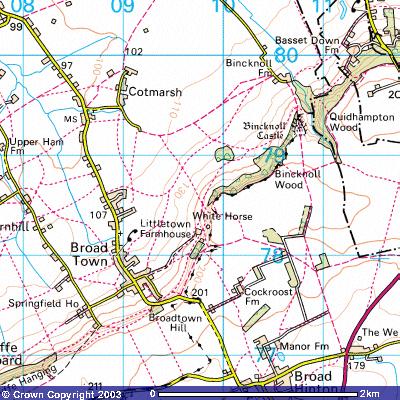
Image produced from the Ordnance Survey Get-a-map service. Image reproduced with kind permission of Ordnance Survey and Ordnance Survey of Northern Ireland.
Photos
Aerial View
Reproduced with kind permission of Dae Sasitorn and Adrian Warren - www.lastrefuge.co.uk
Close Up
View from the Farm
View from the Farm
View from the Village
Prepared with the aid and approval of the Broad Town White Horse Restoration Society.
